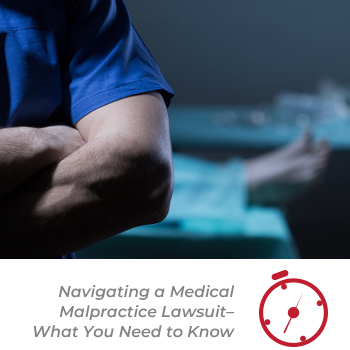
In my practice I regularly represent people who have been misdiagnosed and, as a result, have suffered devastating consequences. I describe some of these horrific cases in my book, Navigating a Medical Malpractice Lawsuit: What You Need to Know.
Recently, the National Academies of Sciences (formerly the Institute of Medicine), in its first comprehensive look at outpatient visits, reported that most every American will be misdiagnosed by a doctor at some point in their lifetime, often with catastrophic results.
This should concern us all.
Outpatient Visits Examined
Improving Diagnosis in Health Care is the long-awaited follow-up to the IOM’s landmark report published in 1999, To Err Is Human, which shocked the nation when it reported as many as 98,000 people die of medical error in hospitals each year. (Newer estimates put that figure at 440,000 people each year). The latest Academy report synthesizes the results of earlier studies that focused on outpatient care, such as visits to family practice doctors, pediatricians and internists, and includes recommendations for change.
Among the earlier studies was one that estimated 1 of every 20 patients seen in doctors’ offices each year (about 12 million Americans) are misdiagnosed, and these errors contributed to at least 10% of all preventable patient deaths.
Because I regularly represent the victims of misdiagnosis and other errors made by doctors and hospitals, these numbers are not particularly surprising to me. In fact, I suspect they are higher, something the study authors also concluded.
Commonly Misdiagnosed Conditions
What are some of those mistakes? Another earlier study published in JAMA Internal Medicine, identified the five most common conditions misdiagnosed by primary care doctors as pneumonia, heart failure, cancer, critical renal failure, and urinary tract infections.
I’ve successfully represented many cancer patients whose diagnosis was delayed so significantly that it was too late for the treatment that may have saved their lives.
Health Care System Must Change
According to Academy researchers, the problem of misdiagnosis arises from errors throughout the health care system, and not just bad doctors. Among their recommendations to prevent these errors is that doctors and other health care workers be encouraged to disclose knowledge of medical mistakes, including suspicions, and “near misses,” so that health care institutions and others can analyze these mistakes and develop ways to stop them from happening.
In my experience, this is one of the biggest flaws in our health care system, leading to some of the worst suffering. I often find that doctors and health care workers have attempted to cover up their mistakes. I also describe some of these instances in Chapter Two of my book, “Do Not Expect Doctors and Hospitals to Reveal Their Mistakes.”
Nurses often are afraid to report mistakes made by doctors. This culture of secrecy is well documented and injured patients pay the price.
Outpatient Reforms Urgently Needed
I welcome this new emphasis on preventing outpatient diagnostic mistakes. After the To Err is Human report came out, many hospitals began developing and implementing much needed reforms. If more of us are to stay out of the hospital, primary care physicians must do the same.
This latest report is a good start, admitting, as Yogi Berra once said, “We made too many wrong mistakes.”
RELATED POSTS
How to Prove Misdiagnosis or Delayed Diagnosis is Medical Malpractice
